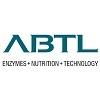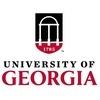Explore all the information on
Poultry management
Poultry management usually refers to the husbandry practices or production techniques that help to maximize the efficiency of production. Sound management practices are very essential to optimize production. Scientific poultry management aims at maximizing returns with minimum investment. A carefully controlled environment that avoids crowding, chilling, overheating, or frightening is almost universal in poultry farming. Cannibalism, which expresses itself as toe picking, feather picking, and tail picking, is controlled by debeaking at one day of age and by other management practices. The feeding, watering, egg gathering, and cleaning operations are highly mechanized. Birds are usually housed in wire cages with two or three animals per cage, depending on the species and breed, and three or four tiers of cages superposed to save space. Cages for egg-laying birds have been found to increase production, lower mortality, reduce cannibalism, lower feeding requirements, reduce diseases and parasites, improve culling, and reduce both space and labour requirements.
We are honored to present Dr. Vincent Guyonnet, who holds a Veterinary degree at the National Veterinary School of Lyon, France & Ph.D degree, Department of Poultry Science, The University of Georgia, Athens, GA-USA (among others), he is an authority and reference in the egg industry at a global level, mixing the scientific and practical part in a dynamic way with emphasis on egg production, egg processing and transformation, animal welfare, sustainability, food safety, human nutrition...
Comments : 1
Recommendations: 0
by Sam Shafer
Looking for a golden goose? Try a goose that’s two years old. In a recent study, researchers with the Heilongjiang Academy of Agricultural Sciences found that goose egg yolks (the most valuable part of the egg) tend to be at their largest following the goose’s second laying season.
The Journal of Applied Poultry Research study links a...
Comments : 0
Recommendations: 0
by Sam Shafer
Ethiopian scientists evaluate three promising chicken breeds in rural and small-scale systems
Improving food security around the world means boosting protein production in ways that work best for local farmers. In Ethiopia, the government and outside agencies have promoted exotic, higher-yielding chicken breeds. Unfortunately, most exotic breeds introduced in the country require a level of investment in feed, veterinary...
Comments : 0
Recommendations: 0
Introduction The world economy is experiencing an exceptionally strong but highly uneven recovery. Global growth is set to reach 5.6 % in 2021- its strongest post-recession pace in 80 yearsin part underpinned by steady but highly unequal vaccine access. Growth is concentrated in a few major economies, with most emerging market and developing economies (EMDEs) lagging: while about 90% of advanced economies are expected to regain their pre-pandemic per capita income levels by...
Comments : 0
Recommendations: 1
Calculating a proper stocking density will determine the maximum farm profitability in broiler chickens. Choosing the stocking density implies knowing the impacts on live performance, and its interrelations with the environment and dietary nutrients. Abundant studies about stocking density run under non-commercial conditions might not indicate the best reliable information to know the farm profitability. As a result, few studies are reliable for commercial purposes. Poultry managers should...
Comments : 5
Recommendations: 3
Heat Stress in Laying Hens Heat stress is one of the primary concerns for laying hen production in the summer as heat waves may significantly increase flock mortality and reduce egg production in hen houses. The use of mechanical ventilation and cooling cells are popular cooling methods used in the southern US, including Georgia. However, most of the layer farms in the US Midwest (where over 50% of US table eggs are produced) do not have evaporative cooling systems due primarily...
Comments : 0
Recommendations: 0
The deep litter method is one sustainable method of managing chicken litter in the poultry farming that many small poultry entrepreneurs use.
In the deep litter method, farmers get following benefit:
It does not take a lot of time to manage.
It ends up into compost manure - the high nitrogen manure is "Green".
Devoid of cage...
Comments : 47
Recommendations: 1
It is widely accepted that the absence of suffering no longer defines animal welfare and that positive affective experiences are important (Mellor 2015). However, there are few valid and reliable tools available to comprehensively...
Comments : 0
Recommendations: 0
Bacterial chondronecrosis with osteomyelitis (BCO) is an infective leg condition that results in lameness, affecting meat chickens internationally. BCO can be induced using mechanical challenges such as wire ramps (Wideman 2016). Based on a study wherein perches had a negative impact on bird latency to lie (LTL) at 42 days (d) old (Phibbs et al. 2020) perches may be a mechanical challenge to birds also, reducing their leg health in a similar way to Wideman’s ramps. This study compared...
Comments : 0
Recommendations: 0
I. INTRODUCTION Maintaining vegetation on free range farms with fixed ranges is a significant issue (Singh et al., 2017). Nonetheless, free range accreditation programs stipulate palatable vegetation to be available on the range at all times (RSPCA 2015). This is more problematic to achieve during dry seasonal conditions and drought, which are common features of the Australian climate. ...
Comments : 0
Recommendations: 0
.jpg&w=3840&q=75)

Srinivasa Farms and Hy-Line: Pioneering Growth in India’s Poultry Market
Suggested link
Free-range layer pullets are typically reared indoors within Australia, but adult layers go outdoors which might cause poorer adaptation due to the mismatch between rearing and laying environments. Indoor enrichments may optimise physical development of pullets and subsequent welfare as adult free-range hens (Campbell et al., 2019). In the outdoor environment, hens may have greater opportunities for exercise and natural behaviours which might contribute to improved physical health and...
Comments : 0
Recommendations: 0
I. INTRODUCTION Heavily driven by public perception and large supermarket monopolies, welfare is of major concern for the poultry industry. The past few decades have seen development of poultry practices with a heavy focus on the welfare of poultry. There have been huge changes implemented to accommodate improvements in welfare, particularly in the layer industry. There are now a number of production systems...
Comments : 0
Recommendations: 1
Free-range layer systems are increasing globally but range use can be low, particularly when birds are first provided outdoor access. It is recommended to match the rearing system with the layer system for optimal bird welfare (Janczak and Riber, 2015). However, within Australia, pullets destined for free-range systems are typically reared indoors which may hinder their adaptability to the outdoor environment as adults. Rearing enrichments may optimise behavioural development and better...
Comments : 0
Recommendations: 0
Is it cost effective to install solar panels with battery storage (HYBRID on-grid) system in a tunnel vented building with 45,000 capacity? I am just looking into investing in a poultry farm in the near future (Philippines). I would appreciate comments or suggestions. ...
Comments : 20
Recommendations: 2
Introduction Modern meat chicken breeding stock have been selected for extremely efficient conversion of feed into protein and rapid growth. As a result, it has become increasingly more difficult to rear pullets and breeders to achieve the healthy chick numbers needed to supply the ever-expanding poultry meat market. There are many factors involved in producing a healthy pullet and breeder chicken. These include; housing, lighting, temperature and air control, health,...
Comments : 0
Recommendations: 2
In an interview with Engormix at IPPE 2020, Aidan Connolly, CEO of Cainthus, emphasizes how the animal nutrition industry embraces digital technology -for example, the Artificial Intelligence- in its daily routine and highlights the role of technology to improve the animal production....
Comments : 2
Recommendations: 0
The Animal AgTech Innovation Summit will be live online on October 19-20, 2021 for two days of interactive live-streamed sessions, roundtable discussion groups and 1-1 video meetings.
David Speller, OPTIfarm CEO/Founder, will be one of the distinguished speakers at the event and in this...
Comments : 0
Recommendations: 1
by Sam Shafer
For broiler chickens, how much space each bird gets around a feeder may be an important factor in weight gain and overall productivity.
According to a new Journal of Applied Poultry Research ® study led by scientists at Mississippi State University and the USDA-ARS Poultry Research Unit, increased feeder spacing can help growing broiler chickens get off to a good start—but these improvements don’t appear to translate to...
Comments : 0
Recommendations: 0
1. Introduction The food demand is projected to double over the next 50 years [1]. The increase in the demand of poultry meat over the past decade has been due to the low cost, the positive nutritional profiles, and the suitability in farming [2]. Intensive production is required to achieve the demand, and poultry health should be approached in a multidisciplinary way to ensure animal health [3]. According to OIE, an animal is in a good state of welfare if it is healthy,...
Comments : 0
Recommendations: 0
Introduction In late years, genetic studies on broiler chickens for selection of traits such as high growth rate and larger size of the body shows there is a negative correlation between reproductive traits and increasing yield. So that's in the roosters, physiological disorders like decreased libido, decreased mating numbers and reduced sperm production have increased (Dawkins and Layton, 2012). In addition to the strong negative genetic correlation between productive and...
Comments : 3
Recommendations: 5

















.jpg&w=3840&q=75)









